| کد مقاله | کد نشریه | سال انتشار | مقاله انگلیسی | نسخه تمام متن |
|---|---|---|---|---|
| 2011317 | 1067003 | 2010 | 8 صفحه PDF | دانلود رایگان |
عنوان انگلیسی مقاله ISI
Transcellular biosynthesis of eicosanoids
دانلود مقاله + سفارش ترجمه
دانلود مقاله ISI انگلیسی
رایگان برای ایرانیان
کلمات کلیدی
موضوعات مرتبط
علوم زیستی و بیوفناوری
بیوشیمی، ژنتیک و زیست شناسی مولکولی
زیست شیمی
پیش نمایش صفحه اول مقاله

چکیده انگلیسی
The metabolism of arachidonic acid into biologically active compounds involves the sequential activity of a number of enzymes, sometimes showing a unique expression profile in different cells. The main metabolic pathways, namely the cyclooxygenases and the 5-lipoxygenase, both generate chemically unstable intermediates: prostaglandin (PG) H2 and leukotriene (LT) A4, respectively. These are transformed by secondary enzymes into a variety of chemical structures known collectively as the lipid mediators. Although some cells express all the enzymes necessary for the production of biologically active compounds, it has been shown that eicosanoids are often the result of cell-cell interactions involving the transfer of biosynthetic intermediates, such as the chemically reactive PGH2 and LTA4, between cells. This process has been defined as the transcellular pathway of eicosanoid biosynthesis and requires both a donor cell to synthesize and release one component of the biosynthetic cascade and an accessory cell to take up that intermediate and process it into the final biologically active product. This review will summarize the evidence for transcellular biosynthetic events, occurring in isolated cell preparations, complex isolated organ systems, and in vivo, that result in the production of prostaglandins, leukotrienes, and lipoxins.
ناشر
Database: Elsevier - ScienceDirect (ساینس دایرکت)
Journal: Pharmacological Reports - Volume 62, Issue 3, MayâJune 2010, Pages 503-510
Journal: Pharmacological Reports - Volume 62, Issue 3, MayâJune 2010, Pages 503-510
نویسندگان
Angelo Sala, Giancarlo Folco, Robert C. Murphy,